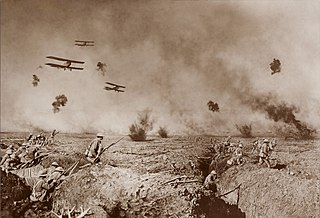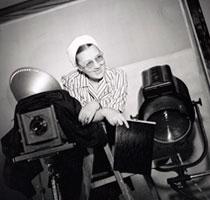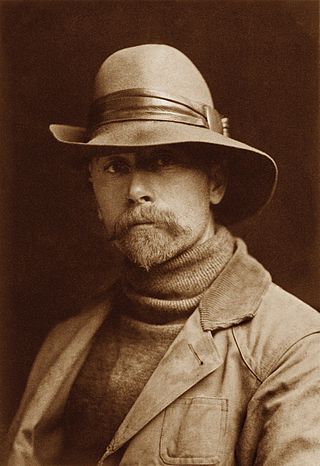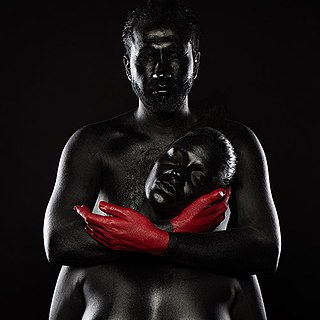
In photography and cinematography, perspective distortion is a warping or transformation of an object and its surrounding area that differs significantly from what the object would look like with a normal focal length, due to the relative scale of nearby and distant features. Perspective distortion is determined by the relative distances at which the image is captured and viewed, and is due to the angle of view of the image being either wider or narrower than the angle of view at which the image is viewed, hence the apparent relative distances differing from what is expected. Related to this concept is axial magnification – the perceived depth of objects at a given magnification.

Photograph manipulation involves the transformation or alteration of a photograph. Some photograph manipulations are considered to be skillful artwork, while others are considered to be unethical practices, especially when used to deceive. Photographs may be manipulated for political propaganda, to improve the appearance of a subject, for entertainment, or as humor.

Three-point lighting is a standard method used in visual media such as theatre, video, film, still photography, computer-generated imagery and 3D computer graphics. By using three separate positions, the photographer can illuminate the shot's subject however desired, while also controlling the shading and shadows produced by direct lighting.

A gobo is an object placed inside or in front of a light source to control the shape of the emitted light and its shadow.

A softbox is a type of photographic lighting modifier, one of a number of photographic soft light devices. All the various soft light types create even and diffused light by transmitting light through some scattering material, or by reflecting light off a second surface to diffuse the light. The best known form of reflective source is the umbrella light, where the light from the bulb is "bounced" off the inside of a metalized umbrella to create an indirect "soft" light.

The key light is the first and usually most important light that a photographer, cinematographer, lighting cameraman, or other scene composer will use in a lighting setup. The purpose of the key light is to highlight the form and dimension of the subject. The key light is not a rigid requirement; omitting the key light can result in a silhouette effect. Many key lights may be placed in a scene to illuminate a moving subject at opportune moments.

In television, film, stage, or photographic lighting, a fill light may be used to reduce the contrast of a scene to match the dynamic range of the recording media and record the same amount of detail typically seen by eye in average lighting and considered normal. From that baseline of normality, using more or less fill will make shadows seem lighter or darker than normal, which will cause the viewer to react differently, by inferring both environmental and mood clues from the tone of the shadows.
Computer facial animation is primarily an area of computer graphics that encapsulates methods and techniques for generating and animating images or models of a character face. The character can be a human, a humanoid, an animal, a legendary creature or character, etc. Due to its subject and output type, it is also related to many other scientific and artistic fields from psychology to traditional animation. The importance of human faces in verbal and non-verbal communication and advances in computer graphics hardware and software have caused considerable scientific, technological, and artistic interests in computer facial animation.

Hard and soft light are different types of lighting that are commonly used in photography and filmmaking. Soft light is light that tends to "wrap" around objects, projecting diffused shadows with soft edges, whereas hard light is more focused and produces harsher shadows.

Louise Emma Augusta Dahl-Wolfe was an American photographer. She is known primarily for her work for Harper's Bazaar, in association with fashion editor Diana Vreeland. At Harper's Bazaar she pioneered a new standard in color photography.

Portrait photography, or portraiture, is a type of photography aimed toward capturing the personality of a person or group of people by using effective lighting, backdrops, and poses. A portrait photograph may be artistic or clinical. Frequently, portraits are commissioned for special occasions, such as weddings, school events, or commercial purposes. Portraits can serve many purposes, ranging from usage on a personal web site to display in the lobby of a business.
In optics, a diffuser is any material that diffuses or scatters light in some manner to transmit soft light. Diffused light can be easily obtained by reflecting light from a white surface, while more compact diffusers may use translucent material, including ground glass, teflon, opal glass, and greyed glass.

A ring flash is a circular light that is often operated with a camera lens in the center to take photographs. Unlike point light sources, a ring flash can illuminate a subject with minimal shadows by closely and evenly surrounding the optical axis of the camera lens. This makes it a popular choice for various types of photography, including macro, portrait and fashion photography.

Nude photography is the creation of any photograph which contains an image of a nude or semi-nude person, or an image suggestive of nudity. Nude photography is undertaken for a variety of purposes, including educational uses, commercial applications and artistic creations. The exhibition or publication of nude photographs may be controversial, more so in some cultures or countries than in others, and especially if the subject is a minor.

In photography and cinematography, a reflector is an improvised or specialised reflective surface used to redirect light towards a given subject or scene.

Photographic lighting refers to how a light source, artificial or natural, illuminates the scene or subject that is photographed. Photographers can manipulate the positioning and the quality of a light source to create visual effects, potentially changing aspects of the photograph such as clarity, tone and saturation to create an accurate rendition of the scene.
Karl Ferris is an English music photographer/designer. He worked on album covers for Eric Clapton, Cream, Donovan, The Hollies and Jimi Hendrix.

Concert photography is the photography of activities relating to concerts and music. It encompasses photographs of a band or musician as well as coverage of a concert. It is a minor commercial endeavor that supports in part of the efforts for many independent photographers. The photographer will be able to travel around different venues. While doing concert photography you would have to have knowledge about photoshop.
Cultural property imaging is a necessary part of long term preservation of cultural heritage. While the physical conditions of objects will change over time, imaging serves as a way to document and represent heritage in a moment in time of the life of the item. Different methods of imaging produce results that are applicable in various circumstances. Not every method is appropriate for every object, and not every object needs to be imaged by multiple methods. In addition to preservation and conservation-related concerns, imaging can also serve to enhance research and study of cultural heritage.

Low-key photography is a genre of photography consisting of shooting dark-colored scenes by lowering or dimming the "key" or front light illuminating the scene, and emphasizing natural or artificial light only on specific areas in the frame. This photographic style is usually used to create a mysterious atmosphere, that only suggests various shapes, often graphic, letting the viewer experience the photograph through subjective interpretation and often implies painting objects or the human body with black non-toxic dyes or pigments.















